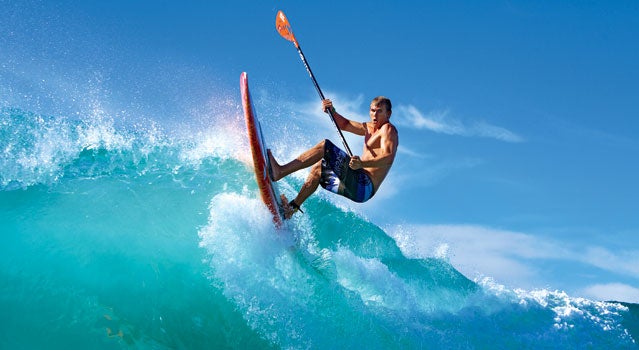AS TOLD TO SCOTT YORKO
1. Choose the Right Board
The key is starting on a board that’s wide enough. The 12-foot-6-inch one I usually ride is really user-friendly at 30 inches wide. You want to enjoy the experience. You don’t want to be wobbling and falling off all the time.
2. Start Calm
Find a river or lake, basically any nice piece of flatwater. Avoid tidal flow and wind. Wind is a big enemy of stand-up because you’re acting like a sail. Somewhere protected and calm is usually the best for a beginner to learn.
3. Paddle Like a Pro
The right-size paddle and proper grip are also important. You know your hands are the right distance apart when you place the middle section of the paddle directly atop your head and both your arms are bent at 90 degrees. As with any sport, you don’t want to get injured from bad technique or have to undo bad habits later.
4. Pick Your Niche
While you can learn the basics in an hour, that’s just the start. You’ve got big-wave surfing, high-performance surfing, flatwater races. There’s something for absolutely everyone. That’s the cool thing about the sport: it doesn’t discriminate—and you don’t need the ocean.
5. Respect Local Rules
There are definitely places now where you can’t stand-up, so it’s best to ask locals where you can and can’t do it. If all else fails, try to find a wave where there’s no one around. Whatever you do, don’t paddle out into a crowded lineup, especially if you don’t see any other stand-ups out there.


